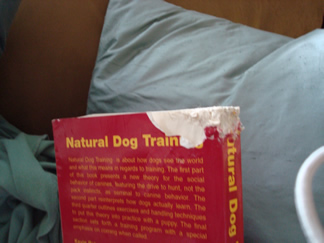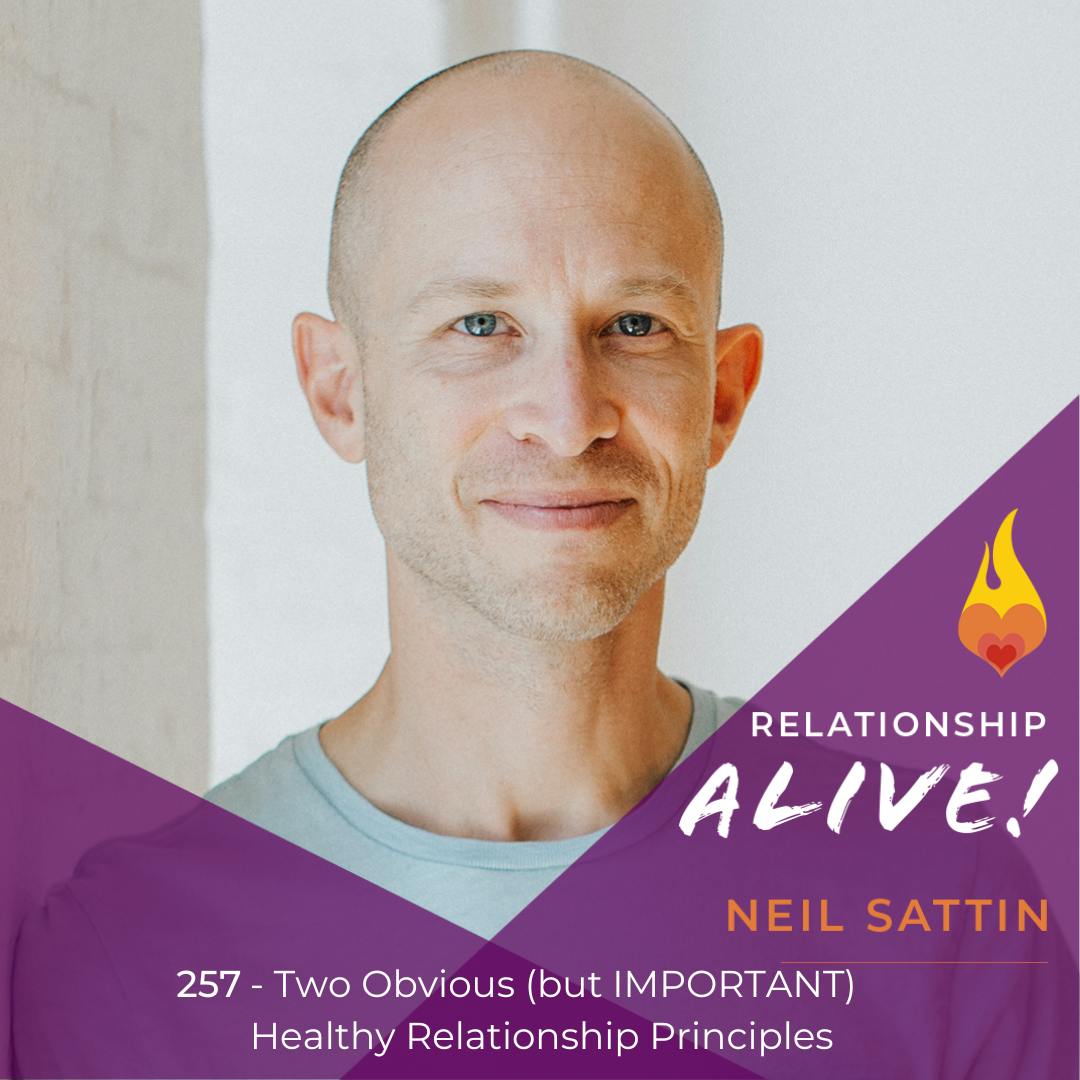Please note, all my dog training articles are now being published at naturaldogblog.com.
A recent query from a reader finds me musing on the subject of destiny…was becoming a dog trainer my destiny? How did I end up where I am today? Does a person have to grow up on a farm with a dozen “Lassies” to understand the canine species?
It is my hope that through these dog training related articles you will learn how to do what I do. So, in terms of broadening your understanding, I figured I’d tell you a little bit more about how I got to be where I am today.
While being raised by wolves would have been a pretty thorough introduction to dog mind, it was not my introduction. Neither of my parents had ever had a family pet, and it wasn’t until the summer after my 4th grade year that we got our first dog, a Cairn terrier named Sparky. Now to say that we were totally unprepared is an understatement, and, poor dog, I think that our ineptitude made quite a dent in Sparky’s terrier brain. He had QUITE the problem with other dogs, and if he had ever gotten off leash he would have run off into the wild never to be heard from again. Still, that kind of behavior is often considered to be the way a terrier works, which made it excusable (albeit annoying) in the eyes of our friends and family when Sparky would, for instance, steal the napkin you had just dropped on the floor and try to basically kill you in defending it. Many of my relatives have Sparky-induced scars on their ankles, making him an occasional topic of conversation ten years after his death. Oh, don’t get me wrong, he was a very loving dog – when he wasn’t trying to kill you.
And for those of you who are keeping track of this sort of thing, all of the obedience training that we did with Sparky was dominance-be-the-alpha-dog based, with choke collars, alpha rolls, and, yes, biscuits, though it was mostly focused on “correcting” undesirable behavior. We had classes, private instruction, read books, etc. So, trust me…we tried.
Flash forward several years, to when another dog found her way into my life when I returned to the Northeast (I attended a University on the west coast). She was full of energy, and her name was “Tootsie” (which I quickly changed to Nola, following the Monks of New Skete approach of giving a dog a name with open vowel sounds). A brief history of corporal punishment from her previous owners left her rather skittish around other humans (except me, for some reason), she pretty much wanted to kill about 4 out of 5 dogs that we encountered, and she had a tendency to run off into the woods, leaving me wondering if I’d ever see her again. Hey, but other than that – she was a great dog! High drama, to be sure (remind me to tell you about the time that she was kidnapped), but a great dog – and, for whatever reason (call it destiny?), we had a bond.
But oh, those little quirks did demand some attention. I attacked the problem with all of the fortitude and perseverance that a college graduate could muster. Stacks of books, tips from other dog owners, advice from trainers, and hours of time spent together. I quickly moved from my Monks-of-New-Skete approach to methods more focused on positive reinforcement (of course Nola was scared of the clicker, so I had to find a way around that problem). Over time we got all of the obedience basics, but no matter what I tried I could not help her with her anxiety, or her seeming desire to hurt other dogs. At one point I had a correspondence with a well-regarded dog trainer whom I contacted via the internet, and he thought that the solution to Nola’s aggression issues was to have her euthanized. Well, yeah, I guess that would work!
At that point, I thought that Nola just had some issues that, for whatever reason, she’d never get over. And I started to see that there were limits to what you could do with training. Those limits become obvious to you when a technique just doesn’t work, or you notice your dog retreating emotionally, or the trainer suggests that you should kill your dog (or, more innocently, that there’s nothing they can do for your dog, because your dog is the way she is). I did what any dog-loving dog owner would do in this situation…I coped. And waited for destiny to work its magic.
Sometime during Nola's sixth year I decided to foster another dog, Buddy, so that Nola could have a chance at some canine companionship (I was a bit misguided, but I'll have to explain that in an upcoming article). Now Buddy had an uncontrollable urge to chase anything that was moving (which was a problem if he happened to slip his lead, as we lived in the middle of the city), and for whatever reason, no matter what I tried, I just couldn't tap into this primal urge of his to...make prey. On everything. It was back to Google for me, to try and find some solution to the problem.
That was how I stumbled upon Kevin Behan's website. Everything I read on his site made sense, not just in terms of how he explained dog behavior, but also in the way that his ideas just resonated with me on some core level. What he described was a way of tapping into a dog’s deepest instincts and seeing the world through their eyes (or, more accurately, feeling the world through their heart). Rather than looking for ways to suppress a dog’s natural energy, he spoke of channeling it into obedience behaviors. He had redefined (for me) how to harness a dog’s social energy, and I wanted to find out more.
I ordered Kevin’s book, and read it cover-to-cover. We had some phone consultations about Buddy and Nola. The two-dog thing wasn’t working out in my household, so Buddy ended up in a new home (not before making his mark – see photo); however, Nola and I made the trip to Vermont for a weekend to experience Natural Dog Training first hand.

In that weekend, I discovered enough to know that I wanted to experience more. Kevin and I talked about the potential for an apprenticeship, and personally I decided that, even if I wasn’t “destined” to become a dog trainer, it would be worth it for me to spend as much time as I could with this guy, to absorb as much as I could about how he viewed the world (and how dogs fit into the big picture). Kevin’s theories encompass the meta-physical, as well as the physical, and throughout my life, as I’ve encountered people who seem to know what they’re talking about in that department, I’ve learned to listen. So many months later I found myself in Vermont with Nola, again – this time for an intensive, month-long, 7-days-a-week, 8-hours-a-day (with some breaks, of course) training in life and dogs.
It was an amazing month, to be sure. While I did learn a lot of specific techniques, I also came to an entirely new understanding of how dogs experience the world. Seen through this lens, certain behaviors that had perplexed me suddenly made sense, and I saw how dogs really were never “wrong”, how they were simply responding to the stimulation that the world was giving them. As humans we tend to judge others (both within and outside of our species) through our own prejudices – dogs, on the other hand, while it’s arguable whether or not they can learn the difference between right and wrong (same can probably be said for humans, actually), they definitely know what FEELS right, and what feels, well, not-quite-so-right. It’s through this understanding, and the way it changes our interaction with our dogs, that our dogs not only become more obedient, but also they become attracted to us – because WE know the best ways to make them feel good, relieved of stress, and satiated at the deepest level – something only a moose could have done before.
By the end of my apprenticeship, things had clicked into place. Techniques were cemented, as was a new way of seeing the world. I had worked with dogs of all shapes and sizes, including Nola. And Nola was much more settled, much more attentive, and much better around other dogs – with the potential to be friendly with almost every dog we encounter. She was, in a word: cured. (yes, you CAN teach an old dog…)
Since then I’ve worked with many dogs, at times full-time, and at other times fitting in training around my “day job”. I’m always learning something new from my canine friends and the people who love them. Generally, the dogs always get it – it’s the humans who often need a little more work. But my clients who are open to looking at their dogs in a new way are successful, both in terms of overcoming issues that they were facing with their dogs, but also in terms of learning a way of interacting with their dog that makes much more sense – to both them AND their dogs.
So, how about YOU, my friends? Tell me more about how you got to be where you are, in your life in general, and in your relationship to our canine companions. And as always, if there’s something specific you’d like me to talk about in a future post, please let me know.


Thanks for sharing Neil.
I never had a dog growing up. My dog history is checkered. My first dog was a Keeshond rescue that mauled my hand on the way home (he was terrified, I was clueless) but not so clueless that I knew he was way out of my league, so he went back.
My second dog was a 6 week old terrier mix. I did just about everything wrong with her, but she was a terrific dog regardless, if you didn't mind her skull splitting bark. I read every dog book I could find, starting with the Monks. We went to basic obedience class, which the instructor very graciously had us take twice. I never made headway on her bark though, and every once in a while she would head for the hills if the opportunity presented itself. I decided the dog was the problem (how humiliating to see THAT in print) and got myself a lovely German Shepherd (in addition).
And now I can repeat: I did just about everything wrong with her, but the GSD was a terrific dog regardless. Truly a great dog. After my second child, an emergency birth that almost cost me and my daughter our lives, I hit a wall during recovery and decided to re-home the terrier so I could have some peace.
After 3 years and a move to the country it was time to add another dog. I went with another German Shepherd, a relative of the first, assuming she would be as easy and the older GSD could teach her the ropes. WRONG.
This is where I started boring my friends with my latest obsessive dog training reading. I can't believe they stuck it out with me. My life revolved around this dog for two years. I did a lot of ball work with her and read Kevin's book around this time. We walked 5 miles every day, we practiced tons of socialization. She was reactive though and just a handful. I felt like a failure and was considering finding her a place on a farm where she could just be in perpetual motion.
A friend talked me into spending a bootcamp weekend with April Frost, author of "Beyond Obedience" here in Vermont. It was PART A of a relationship changing experience for us. I have a lot of respect and admiration for the work that April does. All of a sudden I had a dialogue with my dog, it was great. But it wasn't everything. I wanted to have off-lead experiences. PART B finally brought me to Behesha (Grist) Doan who teaches remote collar training. After a bootcamp with Behesha I spent a week with Martin Deeley learning his method of the ecollar, and watched his phenomenal retrievers in action.
It was at Martin and his wife Pat's place (they are both terrific trainers and extremely supportive) that I was really forced to confront my biggest issues with training: I need to manage my own adrenalin and nervousness, and at some point you have to choose what to believe in. Every one is convinced that their method or approach is best and I just kept bouncing around, always feeling like I made a bad choice, or was missing out on something or had to be apologetic for which methods I chose. I also was a chatty, nervous person when other people were watching me. I was refused entry to an agility training group because I use the ecollar, and they were particularly nasty about it - the politics of dog training is unpleasant and ignorant at best.
I'm finally letting go of that, along with the stigma of remote collars. I spend hours each day working with my dogs, I love watching them and I use everything from treats to tugs to balls to chase games to the ecollar. I adopted a very mellow"perfect" dog after my first GSD died. I started fostering rescues and helping people with their dogs within the past three years.
My observation skills have improved tremendously and each dog that has come my way has taught me a lot, if I've been willing to keep an open mind.
I just now have a third dog, another rescue, he is a challenge, lots of fear issues with people, very reactive. I love the clarity of his body language though and I'm taking all of my leads from him. He's undergoing heartworm treatment so he needs to be very low activity for the next (gulp) 10 weeks. I've started laying tracks for him to keep his brain busy.
I am extremely interested in learning Maryna Ozuna's method of bodywork with dogs. I think a lot of behavioral issues are aggravated by physical discomfort, particularly in aging dogs. I am also hopeful that I can learn more about Kevin's work and observe, take a seminar or spend time at his place. I'm taking a one day workshop with Margot Woods who uses remote training collars, in August.
Learning to be in the moment has been a big lesson for me and is still in progress. I've spent most of my life as a graphic designer, which is always about the next deadline. It has taken me a while to untrain myself, but it is feeling great.
I really appreciate your honesty and candor, Angelique (as will anyone who reads your worthy-of-its-own-post comment).
Regarding the bodywork...yes, I'm very curious about that as well. In fact, I had dialogued some with a TTouch practitioner (someone certified - I've read the books, but am no experTT by any means) about working together, but it just didn't happen for one reason or another. The physical component, with dogs, is SO important, because they are a physical conduit for the emotional energy that the world is sending through them. A relaxed dog can easily handle lots of stimulus, while a tense dog ends up...well, like a narrow pipe with too much water going through it, bursting. To varying degrees. In fact, I really view the basis of my work as essentially helping dogs relax (especially "problem" dogs) at higher and higher levels of stimulation.
It's interesting too that you mention your own anxiety/adrenaline when it comes to working with dogs, and being observed. I find that one of the most difficult things as a trainer has been helping dog owners relax, breathe, fostering that quiet, observant mind. When we get nervous our tendency is typically to "turn the volume up" either extrovertedly (with action/words) or introvertedly (with thoughts) - neither of which being very productive. While the more we can relax, the more our dogs can relax, and everyone can get to the business at hand.
You've probably even seen some of Kevin's writings where he's talking about how he feels that a dog's issues are reflective of the issues going on with their owners. So, to the extent that you believe in this sort of thing, I've often found it helpful to ask the question of "what lesson is this 'x' that I'm experiencing with my dog supposed to be teaching me about my own emotional experience?" You may or may not be surprised at how many times the process of answering that question has resonated with my 'human' clients.
The politics of dog training: let's just say that I am making it my goal to deliver information, as it's worked for me, to the best of my ability - without an axe to grind or something to prove.
So, with that in mind, I'll have to look more into the other trainers you've mentioned. It sounds like you're in a place where you have become more grounded in what methodologies work for you/resonate with you, and I'm sure that has made the hugest of differences in your work with your dogs.